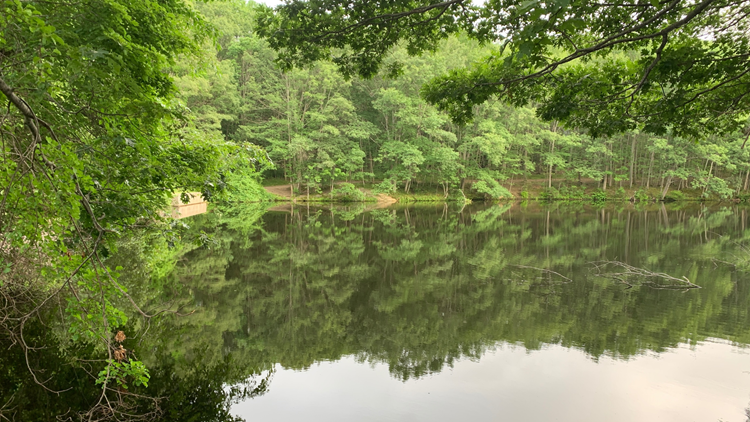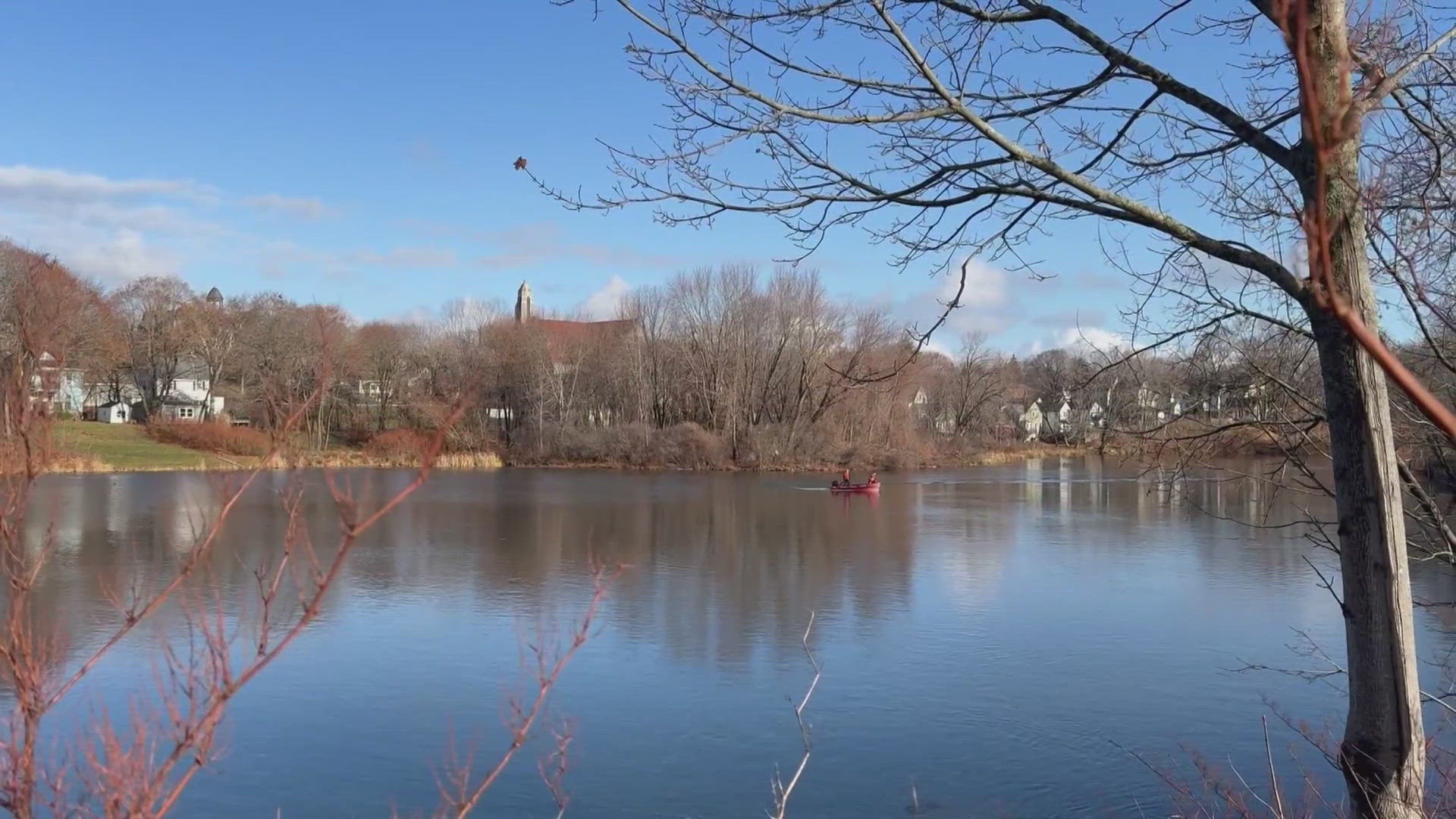MAINE, USA — In recent weeks, we have been vividly, repeatedly reminded that a changing climate is forcing us to rethink patterns of life we have had for generations, reminding us that patchwork fixes will no longer hold, and that building to withstand a 100-year flood will no longer be enough.
Not only is the ocean rising more than twice as quickly than it did throughout most of the 20th century, we are also seeing higher winds, more often coming out of the southeast, as state Marine Geologist Peter Slovinsky told me in a conversation last year.
Our coastline vegetation is ill-prepared for southeasters, said Slovinsky, having for centuries dealt primarily with winter storms blowing primarily from the northeast.
The Maine Climate Council predicts that a single foot of sea level rise (which scientists say will likely happen within the next three decades) will bring 10 times more frequent nuisance flooding and coastal storm impacts.
The council expects the state will lose more than 40 percent of its dry beach area (already a rare and precious resource) with the 1.6 feet of sea level rise expected by 2050, devastating seaside communities that rely on those beaches for recreation and tourism.
Livelihoods will be altered, and land and houses lost. Vital habitat and ecosystems, from marshes to sand dunes and eelgrass beds, will be forced to migrate or, stymied by development along the shore, be swallowed by the sea.
For many years, coastal communities were largely on their own in planning for and mitigating the effects of sea level rise and climate change. That is changing.
Two years ago, in a partnership series with The Pulitzer Center that was published by Down East Magazine, the Monitor profiled ten municipalities — including several hit hard by this week’s first storm — grappling with decisions on how to protect their residents and resources from the ravages of the ocean. The series is called Unstoppable Ocean. I urge you to read it, if you haven’t already.
“A lot of these things are built on the concept of holding the line. We’re going to be able to do that for a certain amount of time. When you know when sea level rises, and maybe one or two feet, we’ll be able to do that,” Slovinsky told me in 2022.
“But once it rises beyond that — ” he paused. “It’s going to be a challenge.”
Pesticides, road salt threaten water supply
Walking the dogs earlier this week after the (first) storm, which dropped an admittedly disappointing amount of snow on Mount Desert Island, I was struck by the thick trail of pink salt brine on the sidewalk.
Perhaps I wouldn’t have paid it much mind, but it kept getting lodged in the dogs’ paws, causing them to hobble forward on three legs until it either jiggled out or I finally saw and brushed it away.
I appreciate the salt, to be sure. It makes it much easier, and safer, for me to walk around town, or drive my daughter to daycare. It’s been found to significantly reduce winter car crashes.
But the amount of it we’re using, coupled with leaking old septic systems and an increased use of fertilizers and pesticides to kill ticks and mosquitoes and manage invasive plants, are among the greatest threats to the state’s future water supply, said Ryan Gordon, a hydrogeologist with the Maine Geological Survey.
“In the last 40 years we’ve solved a lot of point source pollution problems — upgrading sewer treatment facilities, [dealing with] industrial industrial discharges,” said Gordon. “We’ve dealt with a lot of the water withdrawal issues. But I think nonpoint source pollution is still kind of high on the list.”
Point source pollution is when it’s easy to identify the source of pollution because it’s from a single entity, while nonpoint source pollution is harder to pinpoint and may come from multiple places.
Maine used 493,000 tons of road salt in 2019-20, equal to roughly 787 pounds of salt for every resident, according to a 2022 University of Maine paper. Road salt has been found to contaminate vernal pools more than 500 feet from highways.
“With climate change, we’re getting more kind of mixed precipitation events in the wintertime,” said Gordon. “Transportation is increasing. And salt use is increasing… It’s a tricky situation, because towns feel they have to salt the road — it’s a safety thing. It’s an immediate safety concern. But over time, it’s polluting groundwater.”
There’s evidence of this around the state, said Gordon. Not far from me, in Tremont, the Department of Environmental Protection found in 2017 that wells had been contaminated with road salt and septic seepage, according to reporting in the Mount Desert Islander.
Climate Monitor devotees may remember that we wrote about road salt likely causing the mysterious deaths of dozens of salamanders last spring during the annual Big Night migration.
It’s harder to get a handle on pesticide use, but a 2019 paper found pesticides throughout rivers and streams in Maine, with a greater variety in waterways near larger cities. While the report noted that levels “seldom reach concentrations of concern,” they can still impact the plants and animals that live nearby.
“Everybody sprays for ticks now, and, and then the lawn services are like, ‘we’ll spray for ticks and mosquitoes too, and you won’t have mosquitoes.’ And people love it,” said Gordon. “They tell their friends.”
Some families are using tick boxes, which attract tick-carrying rodents, in lieu of pesticides, according to a report from News Center Maine, but they can be costly, running into the hundreds of dollars annually to treat an average home.
The evidence of the different pollutants can perhaps be seen most vividly in the increasing numbers of lakes and streams affected by algae blooms each summer.
More development near shorelines, aging septic systems, and heavier rainfall are washing bloom-inducing nutrients into waterways, and higher surface water temperatures are creating optimal conditions for algae to thrive.
“For years scientists have been predicting a lot more algae blooms in our latitudes as a result of climate change and I don’t doubt it is happening,” Linda Bacon, lake assessment section leader for the DEP told the Bangor Daily News last year. “Our lakes are really suffering now and I really don’t see it getting any better.”
When asked about the greatest threats facing the state’s drinking water resources, Gordon said, “I’m more concerned with contamination than I am with water amounts. Withdrawals and use I think we have a pretty good handle on. But ongoing nonpoint source pollution of water I think is going to continue to be a problem.”
This story was originally published by The Maine Monitor, a nonprofit and nonpartisan news organization. To get regular coverage from the Monitor, sign up for a free Monitor newsletter here.



